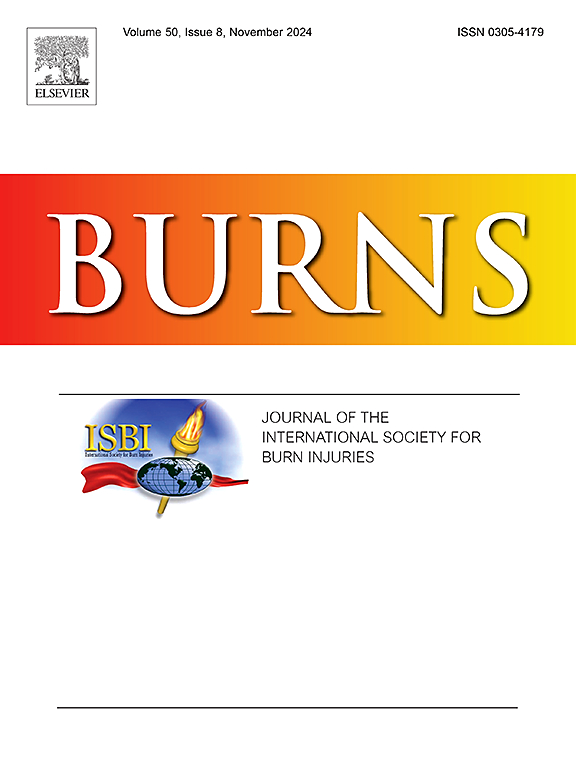Quality of life and return to work rates in the first two years following major burn injury
IF 3.2
3区 医学
Q2 CRITICAL CARE MEDICINE
引用次数: 0
Abstract
Background
A better understanding of how major burns patients recover following injury is vital in assessing trauma care and informing healthcare and rehabilitation provision. We aimed to describe the longer-term health and return to work status of major burns patients and identify factors associated with positive outcomes i.e., reporting no problems with health-related quality of life, returning to work).
Methods
This registry-based cohort study included adult (≥ 16 years) patients with a burn injury affecting ≥ 20 % total body surface area registered by the Victorian State Trauma Registry with a date of injury from July 1 2009 to June 30 2022. Patients were followed-up at six, 12, and 24 months post-injury, completing the 3-level or 5-level EuroQoL 5 dimensions questionnaire (depending on their date of injury) and return to work-related questions at each time point. Mixed effect regression models were used to predict factors associated with quality of life outcomes. Modified binary Poisson models were used to model the probability of experiencing no problems in each of the quality of life domains, and mixed effects linear regression was used to model the overall utility score.
Results
Two hundred and eighty-seven patients were included; 63 (21.9 %) did not die but were completely lost to follow-up. The prevalence of reporting no problems at 24 months post-injury was 70.2 % for mobility, 77.8 % for self-care, 48.0 % for usual activities, 49.7 % for pain or discomfort, and 51.5 % for anxiety or depression. The predicted probability of reporting no problems in each of the EQ-5D health states was lowest at six-months and increased over time.
Conclusions
The prevalence of ongoing problems – particularly with usual activities, pain, and anxiety/depression – at 24 months post-injury is high, confirming that major burns are often an ongoing disorder. Greater investment in interventions designed to reduce these problems is needed.
求助全文
约1分钟内获得全文
求助全文
来源期刊

Burns
医学-皮肤病学
CiteScore
4.50
自引率
18.50%
发文量
304
审稿时长
72 days
期刊介绍:
Burns aims to foster the exchange of information among all engaged in preventing and treating the effects of burns. The journal focuses on clinical, scientific and social aspects of these injuries and covers the prevention of the injury, the epidemiology of such injuries and all aspects of treatment including development of new techniques and technologies and verification of existing ones. Regular features include clinical and scientific papers, state of the art reviews and descriptions of burn-care in practice.
Topics covered by Burns include: the effects of smoke on man and animals, their tissues and cells; the responses to and treatment of patients and animals with chemical injuries to the skin; the biological and clinical effects of cold injuries; surgical techniques which are, or may be relevant to the treatment of burned patients during the acute or reconstructive phase following injury; well controlled laboratory studies of the effectiveness of anti-microbial agents on infection and new materials on scarring and healing; inflammatory responses to injury, effectiveness of related agents and other compounds used to modify the physiological and cellular responses to the injury; experimental studies of burns and the outcome of burn wound healing; regenerative medicine concerning the skin.
 求助内容:
求助内容: 应助结果提醒方式:
应助结果提醒方式:


